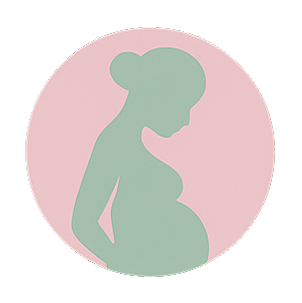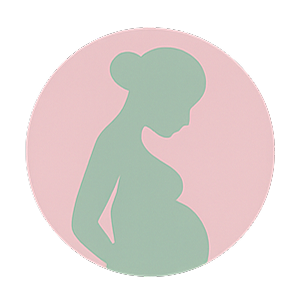How to Use a Pregnancy Exercise Ball (Birth Ball) for Comfort, Strength & Labour Prep
A pregnancy exercise ball — also known as a birth ball — is one of the most affordable and effective tools for staying active and comfortable during pregnancy.
From easing back pain to helping baby into an optimal position for birth, this simple inflatable ball can do wonders for your body (and your birth plan).
In this guide, you’ll learn how to safely use a pregnancy ball, what size to buy, and the best exercises to do at home.
What Is a Pregnancy Exercise Ball?
A pregnancy ball is a high-quality, anti-burst stability ball designed to support your body as it grows and changes throughout pregnancy. It’s larger and more durable than a typical gym ball, offering better support for your joints, pelvis, and lower back.
Benefits of Using a Birth Ball During Pregnancy
Using a pregnancy ball throughout your second and third trimester can help you:
- Reduce lower back and hip pain
- Improve posture as your centre of gravity shifts
- Open the pelvis and encourage baby into a better position
- Gently strengthen your core and pelvic floor
- Stay active without intense movement or gym equipment
- Relax and breathe in supported positions
It’s also a popular tool for early labour, allowing you to stay mobile and upright while encouraging progress.
What Size Ball Should I Get?
Your height determines which ball size is best for you:
- 55cm – if you’re under 5'4" (162 cm)
- 65cm – if you’re 5'4" to 5'10" (162–178 cm)
- 75cm – if you’re over 5'10" (178 cm+)
When you sit on the ball, your knees should be lower than or level with your hips, with feet flat on the floor.
Safe Pregnancy Ball Exercises to Try
You don’t need to be a fitness pro — just 10–15 minutes a day can make a big difference. Try these gentle movements:
1. Pelvic Tilts (Seated)
Sit tall on the ball, hands on hips. Gently tilt your pelvis forward and backward, then side to side. This helps release tension in the lower back and hips.
2. Hip Circles
Sit on the ball and slowly rotate your hips in a circular motion. Imagine drawing a circle with your pelvis. Great for mobility and baby positioning.
3. Figure 8s
Similar to hip circles, but draw a figure-8 shape instead. Keep the movement slow and controlled.
4. Wall Squats with the Ball
Place the ball between your lower back and a wall. Gently squat down, keeping feet shoulder-width apart, then press up. Strengthens legs and glutes safely.
5. Labour Prep Rocking
During early labour, rocking side to side or leaning forward onto the ball while kneeling can help relieve pressure and keep things moving.
When to Use It
- After long periods of sitting at a desk or driving
- As an alternative to a sofa or office chair
- During daily relaxation or breathing exercises
- In antenatal yoga or birth prep classes
- During early labour at home
Many women also use their ball postnatally for gentle movement or rocking baby.
Quick Tips for Safety
- Use on a non-slip surface or with a yoga mat
- Keep feet flat and hip-width apart
- Inflate the ball fully so it feels firm but not rigid
- If you feel dizzy or unstable, stop and sit on a chair instead
💡 Want to get started? Shop this highly-rated pregnancy ball on Amazon.
Final Thoughts
The pregnancy exercise ball is a simple, versatile tool that supports your body from second trimester through labour — and even beyond.
It helps relieve discomfort, encourages better posture, and prepares your pelvis for birth in a gentle, natural way.
Whether you’re looking to stay active, reduce tension, or get ready for labour, this affordable ball deserves a place in every pregnancy toolkit.

